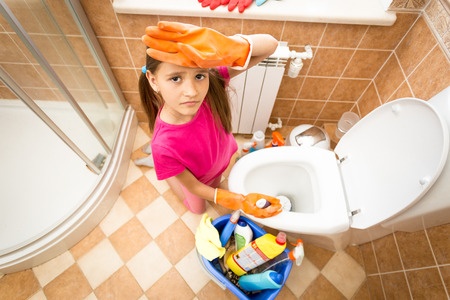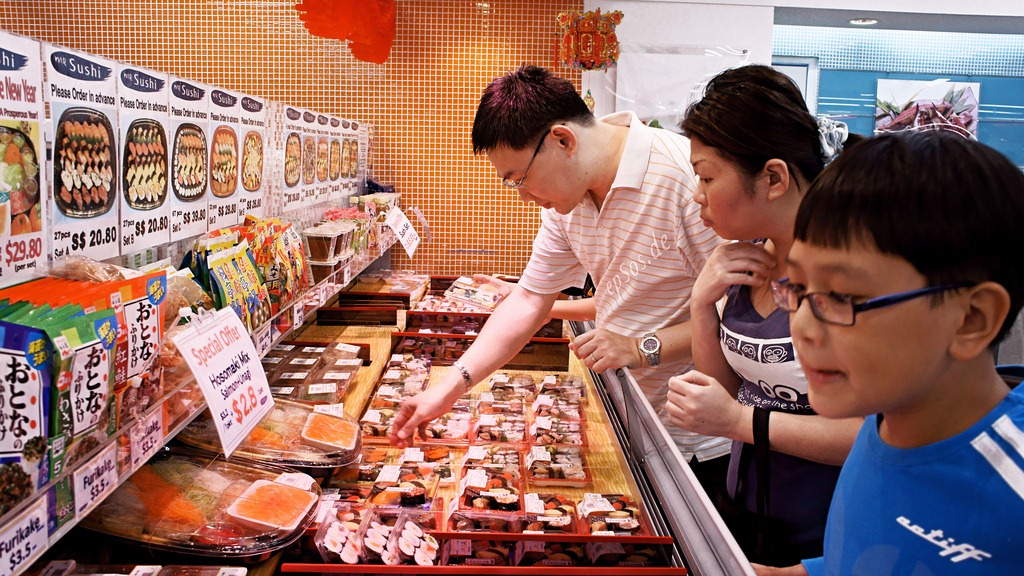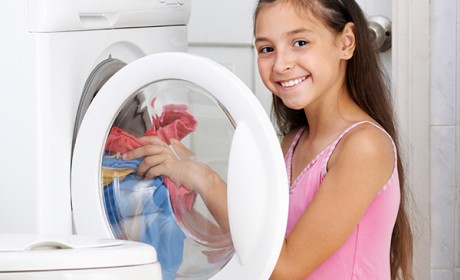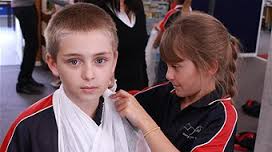這裡說的當然不是使用平板電腦或者是玩遊戲機的能力,而是每個人日常生活中都必須面對的重要「小」事。
老實說,第4、第8 和第10 的確讓我意想不到,但是想深一層,這幾項生活技能所包含的認知和解難能力都很深,對小孩子來說,能掌握這幾項生活能力,大概到哪裡都能充滿自信的過好自已的生活吧?!
1. 洗衣服
Too many teens head to college with no clue how to clean their clothes. Don’t let your kid become one of them. You can begin teaching your child when she is around 6. If you have a top-loading washer, keep a step stool nearby. Walk her through the process—how to measure and add the detergent, choose the settings, and start the machine. Amy Mascott, who blogs atTeachMama.com, taught her three kids (now 9, 10, and 12). She chose cute names for jobs: Wash Warrior, Super-Fly Dry Guy, Put ’Em Away Triple Play. Mascott says there have been snafus, like the time a whole load was folded and put away damp. “But I’m not aiming for perfection. I’m aiming for them to get the job done,” she says.
2. 園藝
Lots of preschoolers learn to plant seeds in class but not how to transfer sprouts into a garden. Whitney Cohen, coauthor of The Book of Gardening Projects for Kids, shares the basics.
- Ask your child to dig a hole that’s slightly larger than the container the plant is in.
- Once you remove the plant from the pot and place it in the hole, have her delicately push soil around it and pat it down.
- Let your child water it with a gentle stream from a watering can with a perforated nozzle.
- By age 6 or 7, your child can remove a seedling himself. Have him split two fingers apart so the stem of the plant goes between them, then squeeze the outside of the container until the plant comes out. If the roots are wound tightly, he should loosen them a few at a time before planting.
3. 包禮物
Your child already loves giving presents, and wrapping them makes it even more satisfying. Preschoolers can help cut the paper and stick on the tape, while kindergartners can complete additional steps with your help, like removing the price tag, finding the right size box, and wrapping paper all the way around the gift to make sure it fits before cutting it.
4. 釘釘子
- Give your child a 7- or 9-ounce hammer. Home-improvement stores sell kids’ models as light as 4 ounces, but with those it’s harder to pound a nail.
- Use a piece of soft wood (such as pine, poplar, or cedar). You can hold it in place with clamps or a vise, or simply place it on the ground.
- Pick nails with a wide head. At first you’ll have to “start” each one for him.
- When your child is ready to do it himself, you can push a nail through a small piece of cardboard so it’s held in place as he hammers it into the wood. Make sure your child holds the edge of the cardboard instead of the nail (to protect his fingers).
- Once he’s mastered that method, have him try holding the nail. Be prepared for a sore thumb or two, but before long he’ll get the hang of it.
5. 寫信
Toddlers can dictate a letter to a family member (enhanced with drawings), attach the stamp, and drop it into a mailbox. Teach an older child how to address an envelope and the five parts of a letter: date, greeting (“Dear…”), body, closing (“Sincerely”), and signature. You can also have them help with holiday cards, find a pen pal (sites such as Amazing Kids and International Pen Friends can help), or correspond with POTUS by having them address a letter to The White House, 1600 Pennsylvania Avenue NW, Washington DC 20500.
6. 簡單煮食
Invite your child to help make meals, assign him jobs to do, and stay calm when the flour spills and the eggshells fly, says Christina Dymock, a mom of four and author of Young Chefs. Yogurt with fruit is a good first DIY breakfast. Preschoolers can spoon yogurt into a bowl and add prewashed cut-up fruit. Work with kids 5 and older on making sandwiches and smoothies(monitor the blender closely). Around age 7 or 8, your kid can try toaster-oven faves like English-muffin pizza, or make a simple salad by ripping lettuce, dumping in croutons, and cutting up tomatoes, cucumbers, and carrots. By age 10, kids can use the stovetop with supervision for a grilled-cheese sandwich. Focus on safety and practice, and you might just have aMasterChef Junior on your hands.
7. 看地圖和導航
If you’ve ever gotten lost following a GPS’s turn-by-turn voice directions, you know why being able to read a map is essential (even if it’s one on your phone). These activities will build your child’s navigational skills.
- Hunt for treasure. Maps seem boring…until you use them to look for booty. Hide toys in your yard and then draw a simple sketch to mark their location. Show your 3- or 4-year-old how objects on the map correspond to those in front of her.
- Have her lead the way. Zoos, museums, and theme parks have colorful, easy-to-read maps. Ask your preschooler to track her path, and challenge an older kid to get you from point A to point B.
- Take up geocaching. Kids ages 5 and up love this outdoor treasurehunt game, which uses GPS tracking to find containers filled with trinkets. Learn more at geocaching.com.
8. 清潔和包紮傷口
Teach your child from a young age not to freak out when he sees blood (and don’t overreact yourself). Giving him a game plan will distract him from the pain and come in handy when you’re not around to kiss his boo-boos: Apply pressure until the bleeding stops, rise the cut with water, dab on some antibiotic ointment, then apply a bandage.
9. 清潔廁所
Keep rags or a sponge handy for wiping toothpaste blobs off the sink. Toilet duties require greater skill. School-age kids can clean the lid, seat, and base with a disinfecting wipe. Make sure they wash their hands thoroughly afterward. Big kids can scrub the bowl with a nontoxic cleaner: Sprinkle the sides with baking soda, let it sit for a few minutes, pour in some vinegar, then scrub with a toilet brush.
10. 比較價格
Teaching kids to be smart consumers takes practice. This three-step approach worked for our family:
- Explain as you go. Mention prices out loud and talk about your choices: “I’m getting gas at the other station because it costs 10 cents less per gallon.” I tell my kids about some things I’d like to have (Lululemon yoga pants, anyone?) but don’t buy because they’re not in our budget.
- Let your kid pay sometimes. Give him an allowance, and then designate items he is responsible for purchasing. My husband and I don’t buy any sweets. That’s forced our kids to become savvy shoppers. When the ice pops at our local pool began putting a dent in their cash flow, they pooled their money and bought a box of 12 to keep in the freezer.
- Play the grocery game. At the supermarket, challenge your kid to find the least expensive brand of paper towels or tomato sauce.
-
original article from Parents Magazine (Michelle Crouch)














